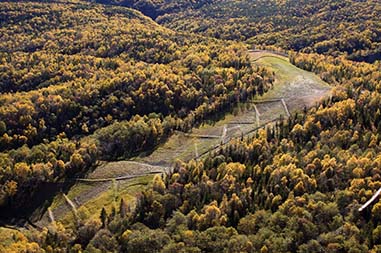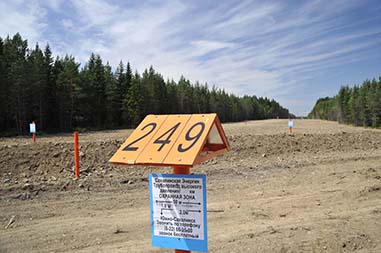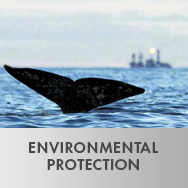- About the company
- Safety and Environment
- Social Performance
- Media
- Tenders
- Jobs and career
- Vacancies
- Students: Internship
- Graduate development programme
- Traineeship Programme
- Energy cup case championship
- Contact us
- Home page
- About The Company
- Company assets
- Transsakhalin pipeline system
Transsakhalin pipeline system
The trans-Sakhalin pipeline system, consisting of offshore and onshore pipelines, is used to transport oil and gas produced under the Sakhalin-2 project.
The oil and gas pipelines run from the offshore platforms in northern Sakhalin via the Onshore Processing Facility (OPF) to the south of the island where the LNG plant and the Oil Export Terminal are located.
The onshore part of the trans-Sakhalin pipeline system consists of two sections. The first section extends from the landfall of the marine pipelines from the Piltun-Astokhskoye Field to the OPF. The nominal diameter of the pipelines in this part of the route is 500 mm for both the oil and gas pipelines. The second section runs from the OPF to the Prigorodnoye Asset, with a nominal diameter of 600 mm and 1200 mm for the oil and gas pipelines, respectively.
The oil and gas pipelines run through the same corridor, crossing 19 tectonic faults and over a thousand watercourses. In areas where the pipelines cross active tectonic fault zones, special laying methods are applied and specific material is used to backfill the trench in case of seismic activity.
Five pipeline maintenance depots and 104 block valve stations are located along the pipeline route.
The total length of the offshore pipelines is 283 km, and that of the onshore pipelines is 1,591 km.
- Safety and Environment






